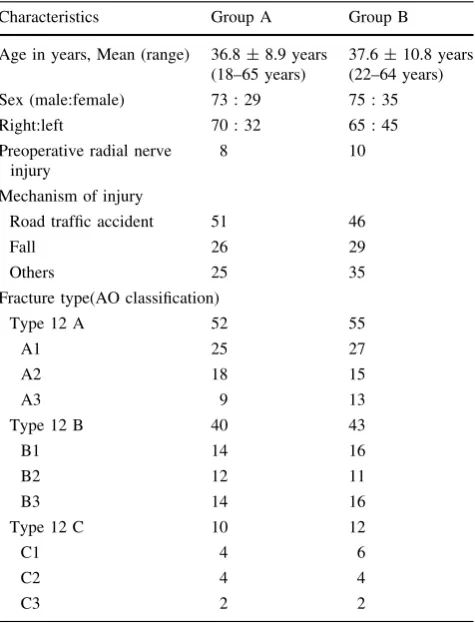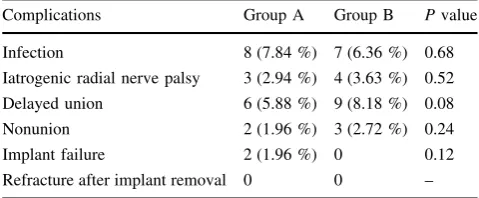Plate osteosynthesis of fractures of the shaft of the humerus: comparison of limited contact dynamic compression plates and locking compression plates
Full text
Figure




Related documents
There is no question that programs with high process quality, however it is defined, have children perform better on cognitive and language skills as well as demonstrate
Plants Occasionally Severely Damaged and Frequently Severely Damaged are often preferred by deer and should only be planted with additional protection such as the use of
The cause for reduced sensitivities includes slower proton transfer with hydronium clusters, as reported for ben- zene (Warneke et al., 2001), as well as more complicated ion
In general, our study revealed poor cervical cancer know- ledge of risk factors and detection method among female university graduates of Bhutan.. Similar studies conducted in
Short Term Results of Functional Outcome of Plate Osteosynthesis vs Antegrade Intra Medullary Interlocking Nailing In The Treatment of Fractures of Shaft Humerus.. Int
The aim of the present study is to evaluate the functional outcome of displaced proximal humerus bone fractures that are surgically managed by locking compression plate and
Conclusions: Displaced mid-shaft clavicle fractures treated with precontoured locking compression plates gave good functional outcome and patient satisfaction with excellent
Methods: This is a prospective study comprising of 30 patients with fractures of proximal humerus were treated by open reduction and internal fixation with locking compression